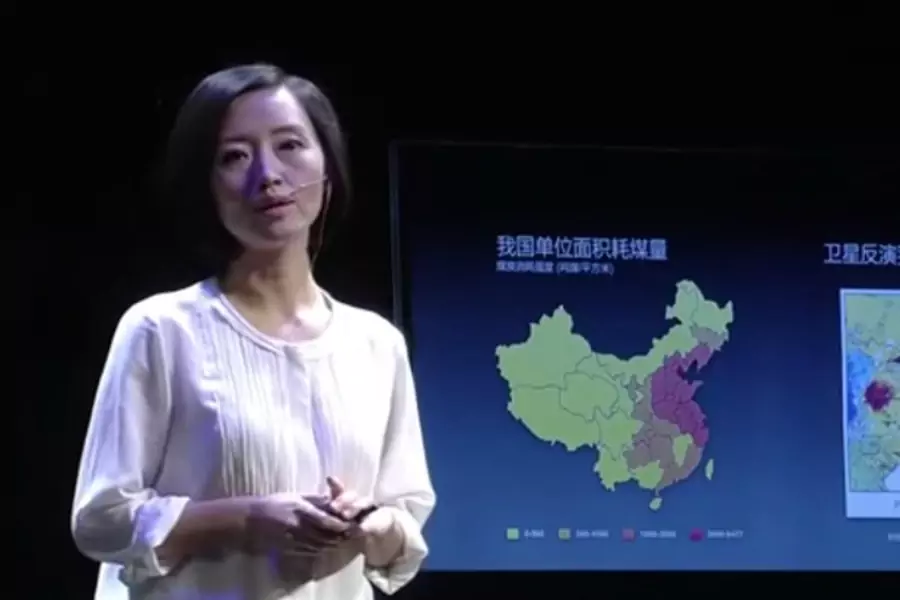A Chinese Environmental Call to Arms Goes Viral and Then Not

More on:
In late February, former CCTV reporter Chai Jing released a gripping video, called Under the Dome, on the sources and devastating impact of pollution in China on the environment and the health of the people. The video mixes hard facts, personal emotional appeals, and interviews with local officials to present a shocking portrait of the decades of environmental abuse that the Chinese people have suffered. Chai presents her talk TED Talk-style—strolling back and forth across the stage in front of a large, clearly captivated audience of Chinese young people.
Hundreds of millions of Chinese have already viewed the video, and hundreds of millions have commented on it as well. Yet over the past week, Beijing has tried to curtail the video’s reach, first calling on news outlets to avoid publicizing the video and then pulling the video from all Chinese websites, including Youku, Tencent, and the People’s Daily portal People.com.cn. There will no doubt be a significant public outcry if the video remains inaccessible for long. It is an important work that has sparked a national conversation.
I could point to many things about the video that were exceptionally well done both in terms of content and presentation, but from a policy perspective, what struck me most was Chai’s success in tracking the pollution supply chain. For example, she discovered that the surprising spikes in pollution that emerged in Beijing late at night and early in the morning, when people were generally not on the road, were due to emissions from trucks. From that point on, she unearthed the following:
- The trucks are manufactured without the requisite emissions control technology;
- Local environmental protection bureaus nonetheless provide the trucks with seals of approval;
- Even when inspections reveal higher than acceptable emissions, if the trucks are carrying produce or other “essential” items, the drivers cannot be fined;
- The fuel quality produced by the oil industry does not match the standard set by the government;
- When gasoline is pumped at the station, the mechanism for controlling vapors or gasoline from leaking does not work;
- And although almost everyone interviewed—except the official from the state-owned oil company Sinopec—is concerned about the problem, no one is to blame.
The implications of Chai’s investigation for Chinese environmental policy are significant. First, Beijing’s policy comfort zone rests in large-scale, top-down initiatives, such as Premier Li Keqiang’s war on pollution; macro-targets for pollution reduction; and the establishment of a regional air quality initiative. The video demonstrates that addressing China’s air quality challenge will require on-the-ground enforcement of standards at the most micro level, such as the effective utilization of gasoline vapor mechanisms on gasoline pumps. Old methods will not work.
Second, Chai’s video raises the question: who is responsible for this situation? Virtually no one interviewed claims responsibility for anything; the power to do something is always somewhere else. But where is that? Notable in Chai’s video is the relative absence of interviews of senior environmental or economic planning officials. The complicity of the Chinese leadership in covering up pollution for decades—calling it fog, for example—is only suggested. That may be one reason the video was permitted to be aired in the first place.
Finally, the video is a call to arms for the Chinese people. At the conclusion of Chai’s film, she offers ideas for how every Chinese citizen can become involved in contributing to protect the environment by calling 12369 to report a complaint. She notes that the situation will only improve when people say no, when they won’t wait for change, and when they actually take action.
As I noted at the outset, the video has now been deleted from Chinese websites. It may be, as some reports have suggested, that the deletion is simply an effort by the Chinese leadership to keep media attention and the public’s focus on the national government meetings (known as the lianghui) currently underway. If so, the video should be back up and running by the middle of March. Strikingly, the country’s new Environmental Protection Minister Chen Jining—himself a Chinese environmental scientist—has already publicly praised the film, likening it to Rachel Carson’s book Silent Spring, which helped launch the environmental movement in the United States. He is a political novice and perhaps got out ahead of the rest of the Chinese leadership. For the sake of the Chinese people, however, let’s hope that the rest of the Chinese leadership catches up to him soon.
More on:
 Online Store
Online Store
